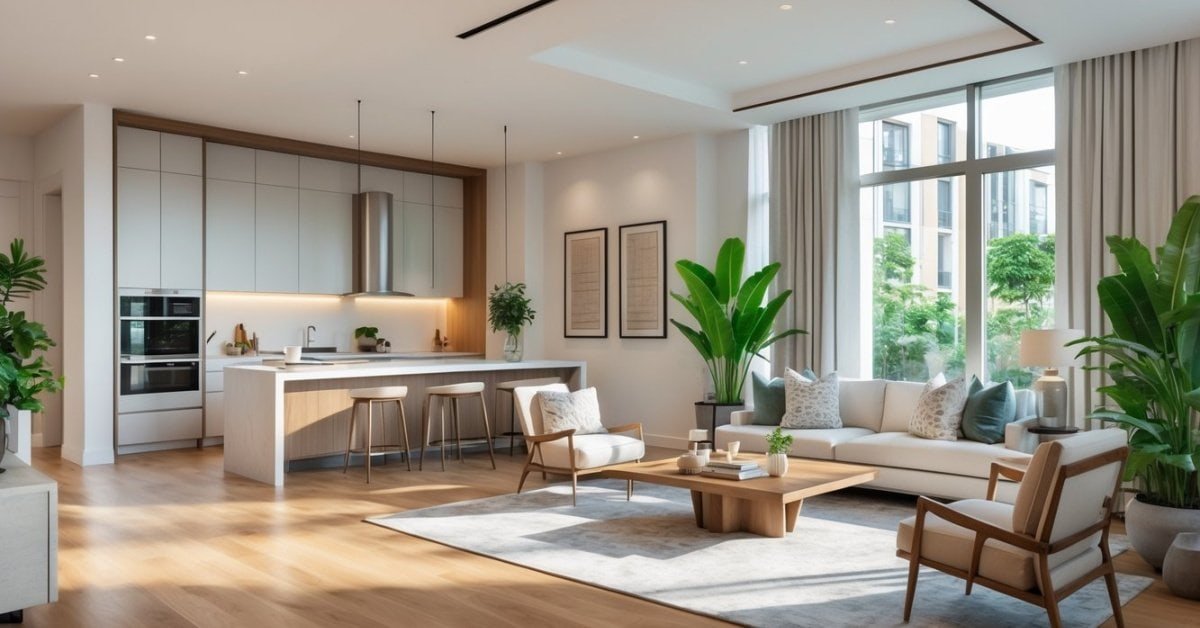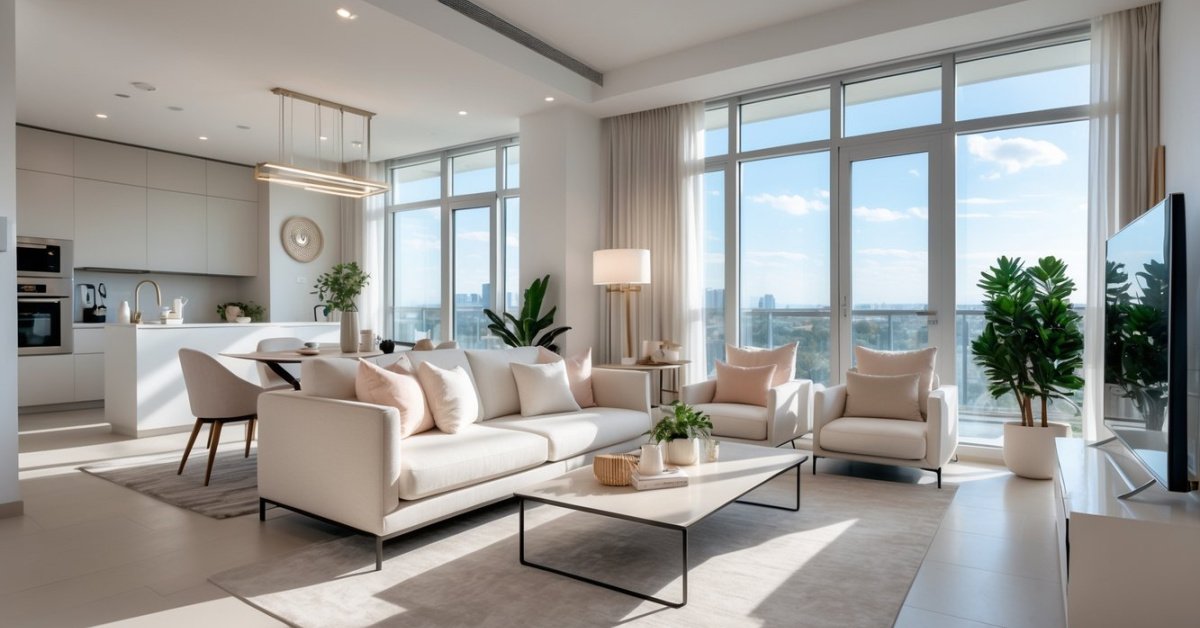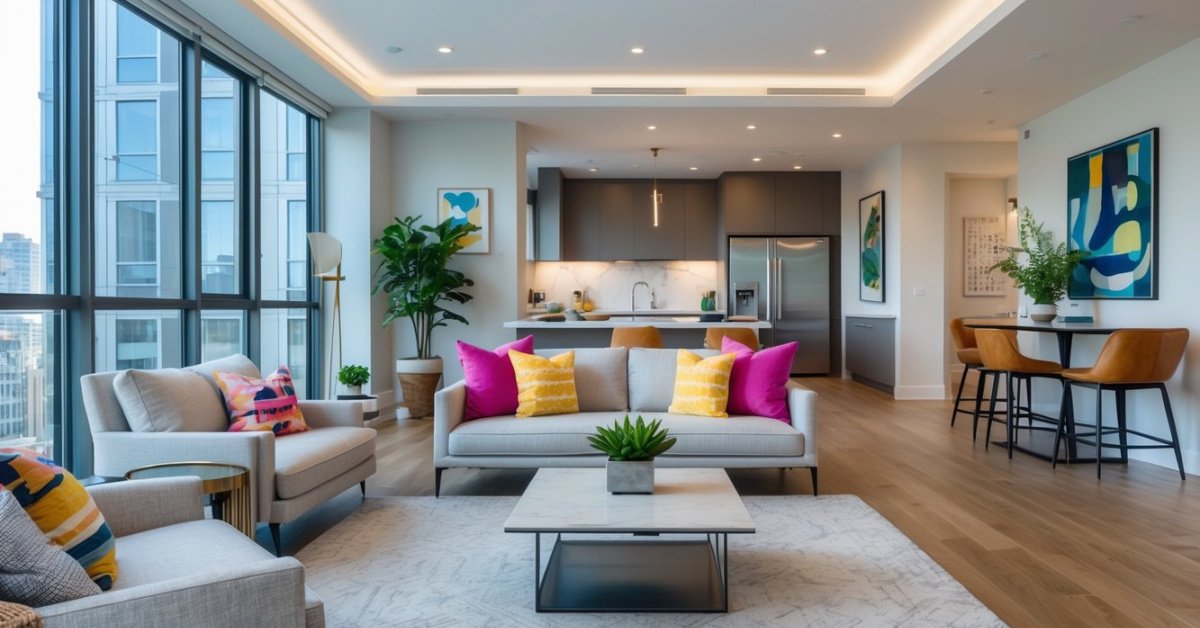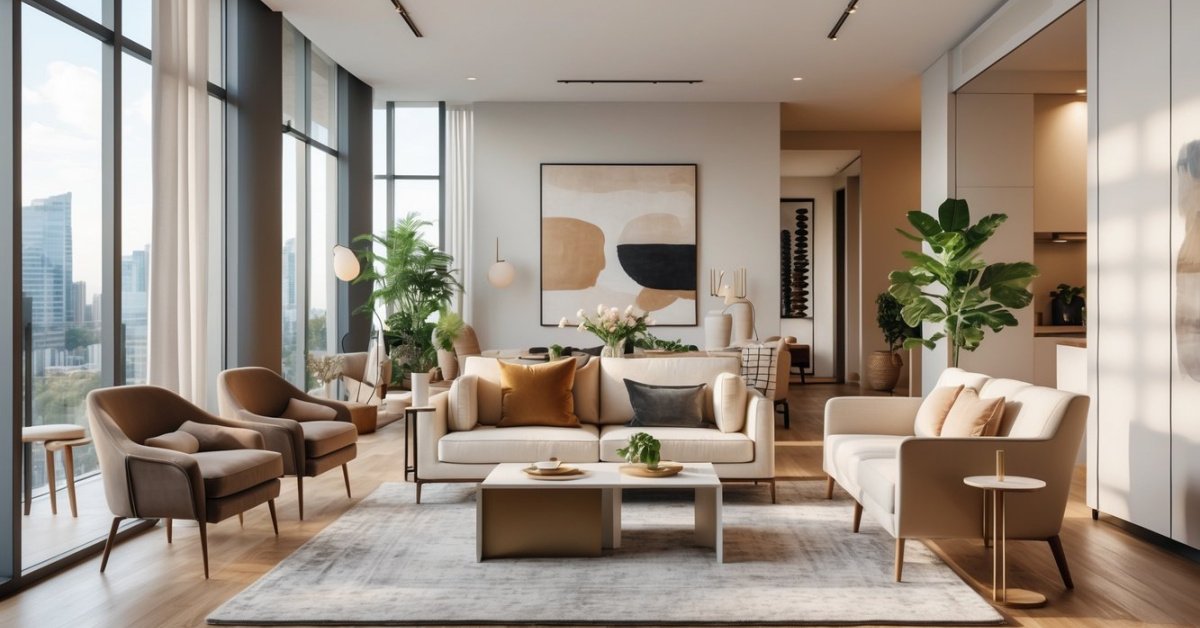Key Takeaways
- Modern minimalism focuses on simplicity and intentionality, emphasizing functionality, clean lines, and neutral color palettes to create a calm, stylish apartment.
- Decluttering is the foundation of minimalism, requiring a “less is more” mindset to keep only meaningful and purposeful items for a clean, open look.
- Functional furniture is key, with multi-purpose pieces like storage ottomans or modular shelving units maximizing space while maintaining a sleek aesthetic.
- Natural materials and textures add warmth and depth, such as wood, linen, or stone, while subtle decorative accents ensure the space feels inviting, not stark.
- Maintaining a minimalist look involves consistent habits, like assessing belongings regularly, avoiding impulse purchases, and rotating layouts or accents to keep the design fresh.
- Minimalism promotes sustainability and efficiency, saving time, reducing waste, and creating a serene space that seamlessly combines style and practicality.
Creating a modern minimalist apartment isn’t just about tossing out clutter—it’s about crafting a space that feels calm, intentional, and effortlessly stylish. I’ve always loved how this design approach combines simplicity with functionality, making even the smallest spaces feel open and inviting. It’s not about having less; it’s about making what you do have truly count.
When I started embracing minimalism, I realized it’s not just a design trend—it’s a lifestyle shift. From choosing the right furniture to finding the perfect balance of textures and colors, every detail plays a role. Whether you’re starting fresh or just looking to refresh your space, achieving that clean, modern look is easier than you might think. Let’s dive into the essentials to transform your apartment into a minimalist haven.
Understanding Modern Minimalism
Modern minimalism combines clean lines with practical design to create a simple yet stylish space. It’s not just about owning fewer things; it’s about making intentional design choices that reflect your lifestyle.
What Defines Modern Minimalism?
Thoughtful design shapes modern minimalism, focusing on functionality and simplicity. It centers around neutral color palettes like white, gray, and beige, paired with natural materials like wood, stone, and metal. Furniture often has simple shapes with minimal ornamentation, creating an uncluttered, open feel. Lighting is essential, using natural light or strategically placed fixtures to emphasize space and highlight key elements.
Storage solutions are important in minimalist apartments. Built-in shelving or hidden storage, for example, helps maintain a clean look while maximizing functionality. Decor is minimal but impactful, featuring a handful of statement pieces rather than overcrowding with smaller items.
Benefits of a Minimalist Apartment Look
A minimalist apartment creates a calming atmosphere, ideal for escaping the chaos of daily life. Removing visual clutter makes the space feel larger, even in smaller apartments. By focusing only on essential items, you save time on cleaning and maintenance.
Cost efficiency is another benefit. Investing in a few quality pieces, like a multi-functional sofa or a dining table with storage, often outweighs the expense of constantly replacing disposable furniture. It’s also a sustainable choice—embracing minimalism reduces waste and encourages thoughtful consumption.
Essential Elements of a Minimalist Apartment
Creating a minimalist apartment isn’t just about getting rid of items—it’s about making intentional decisions to design a space that feels open, functional, and modern. As someone who’s worked on countless apartments, I’ve learned that the best transformations come from focusing on a few key elements.
Neutral Color Palette
A neutral color palette sets the foundation for any minimalist design. I stick to shades like white, beige, gray, or off-white. These tones keep the space feeling calm and cohesive while offering flexibility for subtle design changes. Incorporating natural textures, such as a beige linen sofa or a light-gray wool rug, creates interest without overwhelming. Avoid bold accents unless they’re minimal; for example, one black accent lamp can act as a focal point in the room.
Functional and Stylish Furniture
Furniture in a minimalist apartment must serve dual purposes: functionality and style. I always recommend selecting furniture with clean lines and practical features, like a coffee table with hidden storage or a modular shelving unit. Pieces in wood, metal, or high-quality fabric keep it timeless yet polished. When flipping properties, I’ve found that fewer, smarter furniture choices, such as a sleek sectional sofa or a compact round dining table, maximize space without clutter.
Emphasis on Open Space
A minimalist apartment thrives on an open, uncluttered look. To create this effect, I prioritize removing heavy visual barriers, like bulky furniture or unnecessary partitions. Strategic layouts, like floating a sofa in the middle of a room rather than pushing it to walls, can create flow. Built-in storage solutions maintain organization while keeping the floor plan airy. I always keep in mind—less is more, especially in smaller apartments where every inch counts.
Decluttering Your Apartment
Creating a minimalist apartment starts with decluttering. It’s about freeing up your space and allowing your home to breathe, which makes every square foot more intentional and functional.
Adopting a “Less is More” Mindset
I always recommend starting the decluttering process with a mindset shift. Minimalism means focusing on quality over quantity. Ask yourself if each item in your apartment serves a purpose or brings real joy. Let go of duplicate items, outdated décor, or anything that no longer aligns with the clean, modern look you’re striving for.
Start with one area—like your living room—and evaluate every item. For example, swap multiple decorations for one statement piece, such as a large framed print. Doing this helps create visual relief, leaving the space feeling open and modern. Remember, the goal isn’t to make your apartment feel empty but to ensure that every choice is intentional.
Tips for Organizing and Maximizing Space
Maximizing space is key in smaller apartments, and I’ve learned some go-to tricks over the years. Use multi-functional furniture like ottomans with built-in storage or beds with drawers underneath. Install floating shelves for vertical storage without taking up floor space.
When tackling closets, use clear bins or uniform baskets to categorize items like shoes, seasonal clothing, or accessories. For example, one bin for summer sandals and another for bulky winter scarves. This keeps things tidy while making every item easy to find.
I’m also a fan of built-in storage whenever possible. A custom-built floor-to-ceiling bookshelf can transform a cluttered corner into a sleek, functional space. These custom solutions not only look modern but help eliminate the need for multiple smaller storage pieces.
Strategic layout changes can also help. Rearrange furniture to ensure rooms feel open, emphasizing flow and functionality. Avoid pushing furniture to every wall; instead, create defined areas while leaving visible floor space to maintain a light, airy feeling.
Incorporating Texture and Accents
Achieving a minimalist look doesn’t mean your space has to feel cold or lifeless. Thoughtfully chosen textures and accents can add warmth and character while preserving the clean, modern aesthetic.
Choosing the Right Materials
I always recommend starting with natural materials to bring depth into a minimalist space. Wood, leather, and stone are fantastic options. For example, a light oak coffee table or a marble countertop can introduce subtle texture without overwhelming the design. Complement these with textiles like linen or cotton for items such as throw pillows or curtains. If the goal is durability in high-traffic areas, opt for materials like jute or sisal for rugs—they’re neutral yet sturdy.
I avoid glossy finishes in favor of matte or lightly textured surfaces, as they offer a softer, more refined look. Matte black or brushed metal fixtures for hardware, like cabinet knobs or lighting, provide a sleek, understated contrast that works well in modern spaces. Mixing materials, like pairing a concrete planter with a woven basket, adds dimension without complicating the style.
Adding Subtle Decorative Touches
Decorative accents can enhance your minimalist apartment when used sparingly. For a space to feel intentional, I focus on pieces that are not just beautiful but also functional. A simple ceramic vase, for instance, can act as both art and a practical place for some dried greenery. Choose neutral tones or muted shades for accessories to maintain cohesion, like beige or soft gray blankets on a sofa.
When working with art or decor, I like using a “one statement piece” rule. For smaller apartments, a single large framed canvas or neutral abstract artwork on the wall makes a bigger impact than several small items cluttering the space. Incorporate nature-inspired decor, like a polished stone tray or branches in a glass cylinder, to tie in the organic elements of the materials.
I also suggest layering textures for interest. A woven throw draped over a smooth leather chair, or a lightly textured area rug beneath a sleek dining table, can create subtle contrast and visual intrigue. My goal is always to keep each addition purposeful, letting the essentials shine while adding just enough variety to make the space inviting.
Maintaining the Minimalist Look Over Time
Sustaining a modern minimalist apartment requires consistent habits and occasional adjustments to ensure the space stays intentional and functional. As someone passionate about maximizing small spaces, I believe keeping up with maintenance is just as important as the initial design.
Habits for Keeping Clutter at Bay
Adopting daily practices simplifies maintenance and prevents clutter buildup. I recommend setting up a “one in, one out” rule—every time a new item enters, another must leave. This works especially well with decor or small items like kitchenware.
I also advise creating designated spots for essentials. When every item has a specific home, it’s easier to return things to their place. For example, hooks for bags and keys near the door reduce random piles around the apartment.
Being mindful of new purchases is critical. Before buying, I always ask, “Does this item serve a clear purpose or spark joy in the space?” This mindset eliminates impulsive buys that disrupt minimalism.
Periodic Upkeep and Refinements
Even with good habits, no space stays perfect without routine check-ins. Every three to six months, I go through each area of the home to reassess what’s truly needed. Seasonal clothing swaps are a great time to reevaluate closets.
Some furniture or decor may naturally wear out or feel outdated. Rather than replacing everything, I suggest refreshing key pieces. Swapping out throw pillow covers or updating artwork keeps the look polished without adding clutter.
Deep cleaning enhances the minimalist aesthetic. Dusting shelves, wiping down natural surfaces like wood or stone, and ensuring lighting fixtures are spotless highlight the intentional design elements.
Lastly, I encourage experimenting with layouts periodically. Moving furniture slightly or rotating accents breathes new life into the space while maintaining minimalism.
Conclusion
Creating a modern minimalist apartment is all about embracing intentionality and simplicity while making your space feel warm and functional. It’s not just a design choice—it’s a lifestyle that brings clarity and calm to your home.
By focusing on thoughtful design, quality pieces, and consistent habits, you can maintain a space that’s both beautiful and practical. Remember, minimalism doesn’t mean sacrificing personality; it’s about curating what truly matters and letting your home reflect that.
With a little effort and creativity, your apartment can become a serene retreat that feels fresh, open, and inviting every day.





